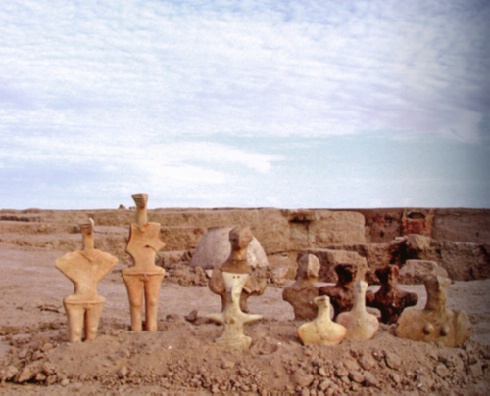The Anthropomorphic Figurines
Driven by the desire to document what could be documented beföre this disapora became complete, two Russian archaeologists, Vadim Masson e Victor Sarianidi, published the first study on this topic in 1973, putting forward an iconographic corpus which is particularly precious for contemporary scholars. Unfortunately, lack of information on the context of the finds constitutes rather a heavy handicap. Nevertheless, the two archaeologists made a first attempt at classification, presenting a picture which has subsequently revealed itself to be generally correct even if, as für as chronological sequence in particular is concerned, has been reviewed and updated recently by Masson (MASSON V .M. 2005).
As far as affnities with other sites in Turkmenistan and the Ancient East are concerned, this study obviously reflected the situation before 1973 and therefore a series of important finds acquired after that date are missing.In fact, the French excavations of Catherine and Jean-François Jarrige in Pakistan, Sarianidi in Margiana, of Francfort at Shortugai, Hakemi at Shahdad, the IsMEOCentro Studi Ligabue at Shahr-i Sokhta, Khoplin in Ircania had not yet begun, like our mission in Turkmenistan which began in 1991. In any case, this work, which was established above all due to the finds at Altyn Depe, constitutes a point of departure for any future research into Turkoman statuettes, and we will often refer to it. (...)
(ibid., p. 144-146)
Source: Rossi Osmida G.: Adji Kui Oasis. Vol.I: The Citadel of the Figurines.Venice: Il Punto Edizioni 2007.


